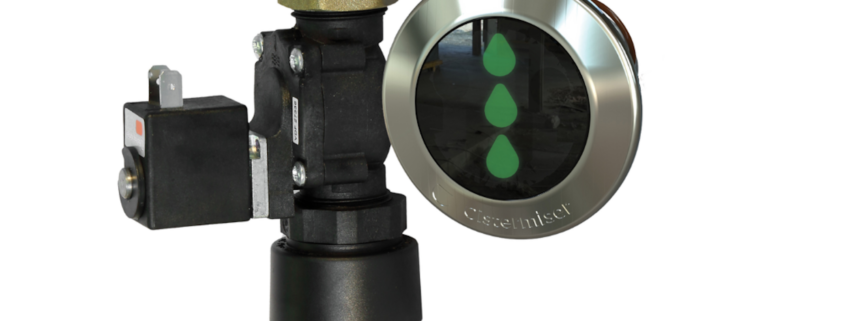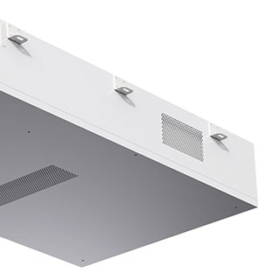Flush with Success
Millions of litres of water are wasted daily in the UK from leaking toilets and uncontrolled urinals. Richard Braid, Managing Director of Cistermiser explains how direct flush systems help schools cut costs and boost sustainability by tackling high water use.
Every day, millions of litres of water are wasted in the UK, much of it from uncontrolled urinals and leaking toilets. Data from Thames Water shows that around 23 per cent of water delivered to non-domestic properties is classified as “continuous flow” – a sign of leaks or poorly controlled systems. A single leaking toilet can waste an average of 400 litres a day, costing hundreds of pounds and needlessly depleting one of our most vital resources. For schools, where water usage is high and budgets are stretched, this represents an urgent problem yet offers an opportunity to save both water and money.
As water scarcity intensifies and the UK faces an additional daily demand of five billion litres by 2050, DEFRA has set some achievable water-saving targets in the commercial built environment: a 37 per cent reduction in water leakage by 2038 and 50 per cent by 2050. While these targets focus on commercial properties, schools have their own role to play in improving water efficiency. Switching to a direct flushing system is just one simple yet highly effective solution, helping schools become both more sustainable while achieving immediate financial benefits.
What is direct flushing?
Direct flushing systems eliminate the need for traditional cisterns by connecting directly to the mains water supply. Instead of relying on a cistern to refill between flushes, these systems use the pressure of the water supply to deliver successive and effective flushes.
Cistermiser’s urinal and toilet solutions are designed to maximise water efficiency and hygiene while minimising maintenance demands. Per toilet, the Easyflush Direct system addresses common issues like leaks from cisterns, which Thames Water estimates can waste the equivalent of five full bathtubs a day. This mains-fed system removes cisterns entirely, reducing maintenance and providing a hygienic flush powered by dynamic water pressure. Users can choose between two modes: ‘wave,’ which triggers flushing with a hand gesture, or ‘walkaway,’ which activates automatically when the user leaves. The system also features a dual flush option, optimising water use based on the duration of occupancy.
Cistermiser’s Direct Flush system flushes individual urinals after use, using as little as 0.5 litres of water per flush. Activated by a PIR sensor, it eliminates the need for traditional auto-flush cisterns, which waste water by flushing all urinals intermittently and irrespective of use. The Direct Flush system has configurable settings for flush timing, sensing distance and flush duration which ensures only the minimum amount of water is used. If the urinal is not used for 12 hours, the Direct Flush automatically runs a hygiene flush to prevent odours and uric acid build-up in the pipework.
For schools, direct flushing has several advantages. Maintenance for instance, becomes significantly easier. Leaking cisterns, particularly those concealed behind panels, are often difficult to repair, leading to prolonged periods of wasted water. You may not even notice a leaky toilet as it could just be a constant trickle down the back of the pan – but even this can waste around 200 litres a day. Direct flush systems remove this risk, reducing the likelihood of leaks and ensuring toilets work effectively even during busy periods.
In addition to preventing leaks, direct flushing systems offer considerable water savings. According to Thames Water, sensor controls on urinals can save 80% compared with uncontrolled flushing; a single urinal fitted with Cistermiser’s Direct Flush system for example, can save up to 182m³ (182,000l) of water annually, equating to a cost saving of £557 and a reduction in CO₂ emissions by 0.06 tonnes per toilet. For a school with multiple facilities, these savings can quickly multiply, making a noticeable impact on budgets and sustainability goals.
Hygiene is another acute consideration for schools and direct flushing systems excel here too. Traditional cisterns can become breeding grounds for harmful bacteria like Legionella, particularly when left unused for extended periods, such as during school holidays, posing a health risk to staff and pupils. Direct flushing systems eliminate this risk by avoiding standing water altogether.
Direct flushing systems are built with versatility in mind. Their dynamic pressure ensures an immediate flush and as there is no cistern to be refilled, successive flushes can be immediately activated. Cistermiser’s Easyflush Direct also has an automatic hygiene flush function that keeps the bowl clean to ensure optimal hygiene, reducing unpleasant odours and the need for frequent manual cleaning. In ‘walkaway’ mode, the system automatically flushes as the user walks away, eliminating the age-old problem of some users forgetting to flush! It also automatically utilises a dual flush mechanism, providing a partial flush if the user departs within 45 seconds and a full flush if the stay is longer.
Switching to direct flush technology offers significant advantages for school facilities managers. As water scarcity becomes an ever more pressing issue, schools that invest in water-saving technologies now will not only help ease pressure on the national water supply but also position themselves as leaders in sustainability.
There are vast financial benefits to be made too. With budgets often stretched, the cost savings associated with reduced water wastage and minimal maintenance demands make a significant difference. For schools looking to invest in long-term, reliable and efficient solutions, direct flush systems provide a clear return on investment. The savings made by installing the Cistermiser Direct Flush Discreet for example, means the system pays for itself in just eight months.
DEFRA’s achievable water-saving targets may currently focus on commercial properties, but schools that adopt similar strategies stand to also reap the rewards. By electing a direct flushing system, schools can future-proof their facilities, meet their environmental obligations and unlock immediate financial savings. In doing so, they ensure that every drop of water, and every pound spent, goes much further.
For more information on Cistermiser visit www.cistermiser.co.uk




Leave a Reply
Want to join the discussion?Feel free to contribute!